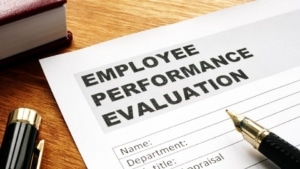Do Annual Reviews Really Work? A Fresh Look at Performance Management
For decades, annual performance reviews were considered the gold standard in employee evaluation. Managers would sit down once a year, summarize 12 months of work, and assign ratings that shaped promotions, raises, and career growth.
But here’s the truth: annual reviews are outdated. Research shows they often leave employees frustrated, disengaged, and unclear about expectations. In today’s fast-moving workplace, once-a-year feedback simply isn’t enough.
So, do annual reviews really work? Let’s break it down.
The Problems with Annual Reviews
1. Too Infrequent
Annual reviews fail because feedback delivered once a year is far too late to be actionable. By the time an employee hears about a missed opportunity or mistake, the damage is already done.
2. Recency Bias
Most managers can’t recall an entire year of performance. Instead, they focus on the last few months, creating unfair ratings that don’t reflect the full picture.
3. Stress and Anxiety
Employees often dread annual reviews, not because of accountability, but because the process feels high-stakes and subjective. This creates anxiety instead of motivation.
4. Little Impact on Development
According to Gallup, only about 14% of employees strongly agree that annual reviews inspire them to improve. In other words, they rarely drive real growth.
Why Companies Are Moving Away from Annual Reviews
Modern organizations—especially fast-growing, innovative ones—are recognizing that traditional reviews can do more harm than good. Instead, they’re embracing continuous feedback models that prioritize development over judgment.
Companies like Adobe, Deloitte, and GE have scrapped annual reviews in favor of ongoing performance conversations, real-time coaching, and 360-degree feedback tools. The result? Better engagement, higher productivity, and improved retention.
The Rise of 360 Feedback
Unlike annual reviews, 360 feedback gathers insights from multiple sources—peers, managers, direct reports, and even clients. This approach provides a balanced, holistic view of performance, while reducing bias.
Key benefits of 360 feedback include:
- Continuous Development: Frequent check-ins allow for real growth.
- Increased Fairness: Feedback comes from multiple perspectives, not one manager.
- Stronger Engagement: Employees feel heard and supported, not judged.
- Alignment with Modern Work: Collaborative, agile environments thrive with regular feedback loops.
Do Annual Reviews Still Have a Place?
Annual reviews aren’t completely obsolete. For some organizations, they provide a structured way to make compensation and promotion decisions. However, they should not be the only—or even the primary—method of evaluating performance.
Instead, the most effective companies combine formal annual evaluations with ongoing 360 feedback to ensure employees get both recognition and actionable guidance.
The G360 Surveys Advantage
At G360 Surveys, we believe performance management should be continuous, fair, and growth-oriented. Our 360 feedback platform helps organizations:
- Identify leadership strengths and blind spots
- Track progress over time with repeat surveys
- Customize competencies to align with company goals
- Provide actionable insights for both individuals and teams
By replacing outdated annual reviews with a modern feedback system, companies can build stronger leaders, improve engagement, and drive long-term success.
Conclusion
So, do annual reviews really work? The short answer: not on their own. Today’s workforce demands more frequent, balanced, and constructive feedback.
If your organization is still relying solely on once-a-year reviews, it’s time to rethink your approach. A 360 feedback system like G360 Surveys offers a smarter, more effective way to develop leaders and teams in real time.
✅ Next Step: Explore G360 Surveys and learn how you can move beyond outdated performance reviews toward a culture of growth and development.


